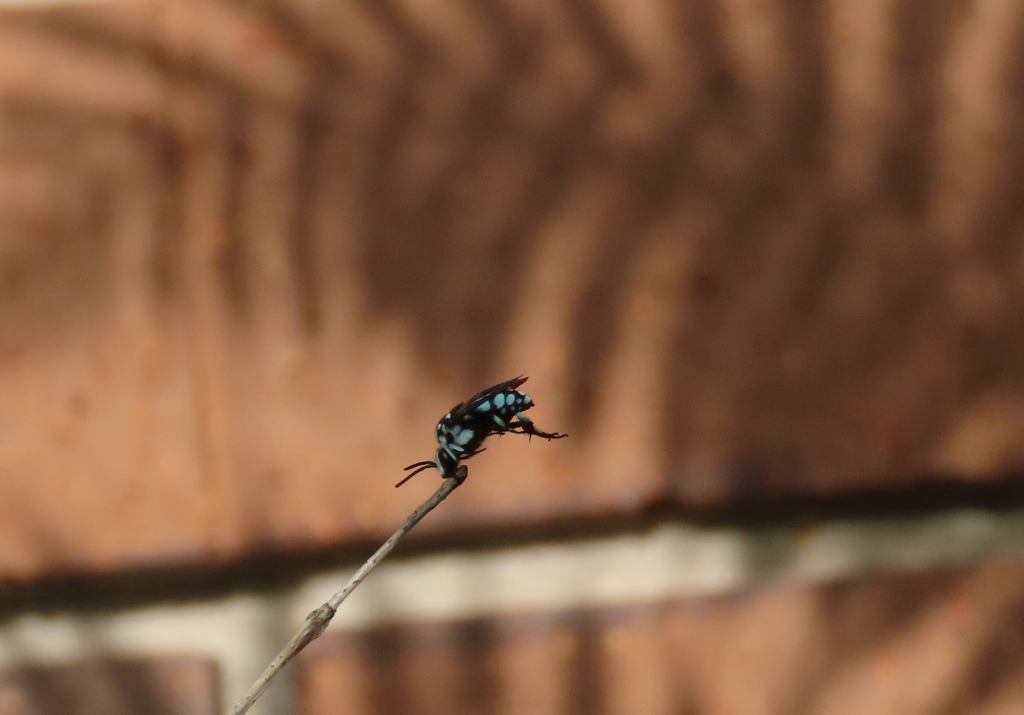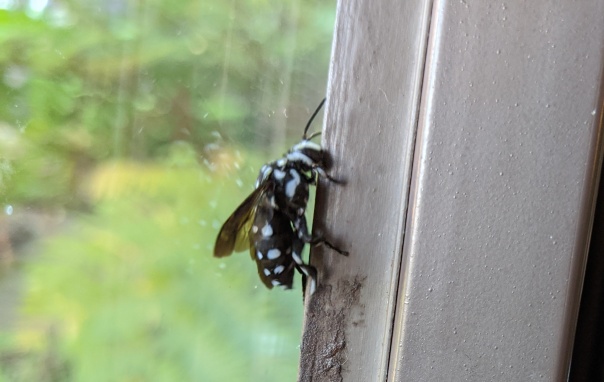Blog Archives
Neon Cuckoo Bee perched on its face
A cuckoo bee visited our garden today. I’ve only seen these bees a few times, and posted once before about them on this blog. That was way back in 2020, and the bee that came to visit on that day was black and white, a Domino Cuckoo Bee.
Today’s bee had blue markings, which I think makes it a Neon Cuckoo Bee (Thyreus nitidulus):

It looks as if the bee is resting on its face. In fact, it’s holding on to the twig with its mandibles — those are the strong jaw parts that it uses to chew its way out of its egg, shape wax into a honeycomb, feed its larvae, and more.
Cuckoo bees are native to Australia. They’re called “cuckoo bees” because they lay their eggs in other bees’ nests. In particular, Neon Cuckoo Bees target another Australian bee, the Blue-banded Bee. The Neon Cuckoo Bees’ eggs hatch more quickly than the host bee’s eggs, and the larva eats up all the nectar that the Blue-banded Bee parent has stored for its offspring!
Cuckoo bee visits my study
Bees in Australia can look different from what you might expect. This little creature buzzed into my home study yesterday, explored the room, then tried to exit via a closed window:
It’s a cuckoo bee. More specifically, it’s a Domino Cuckoo Bee (Thyreus lugubris). Why the word “cuckoo” in the name? Like their avian counterparts, cuckoo bees lay their eggs in the nests of other bees, rather than building their own nest.
Here’s a still photo of the bee:
After taking the photographs, I used the glass-and-paper trick to capture the bee, and released it outside. It zoomed off quite happily.

